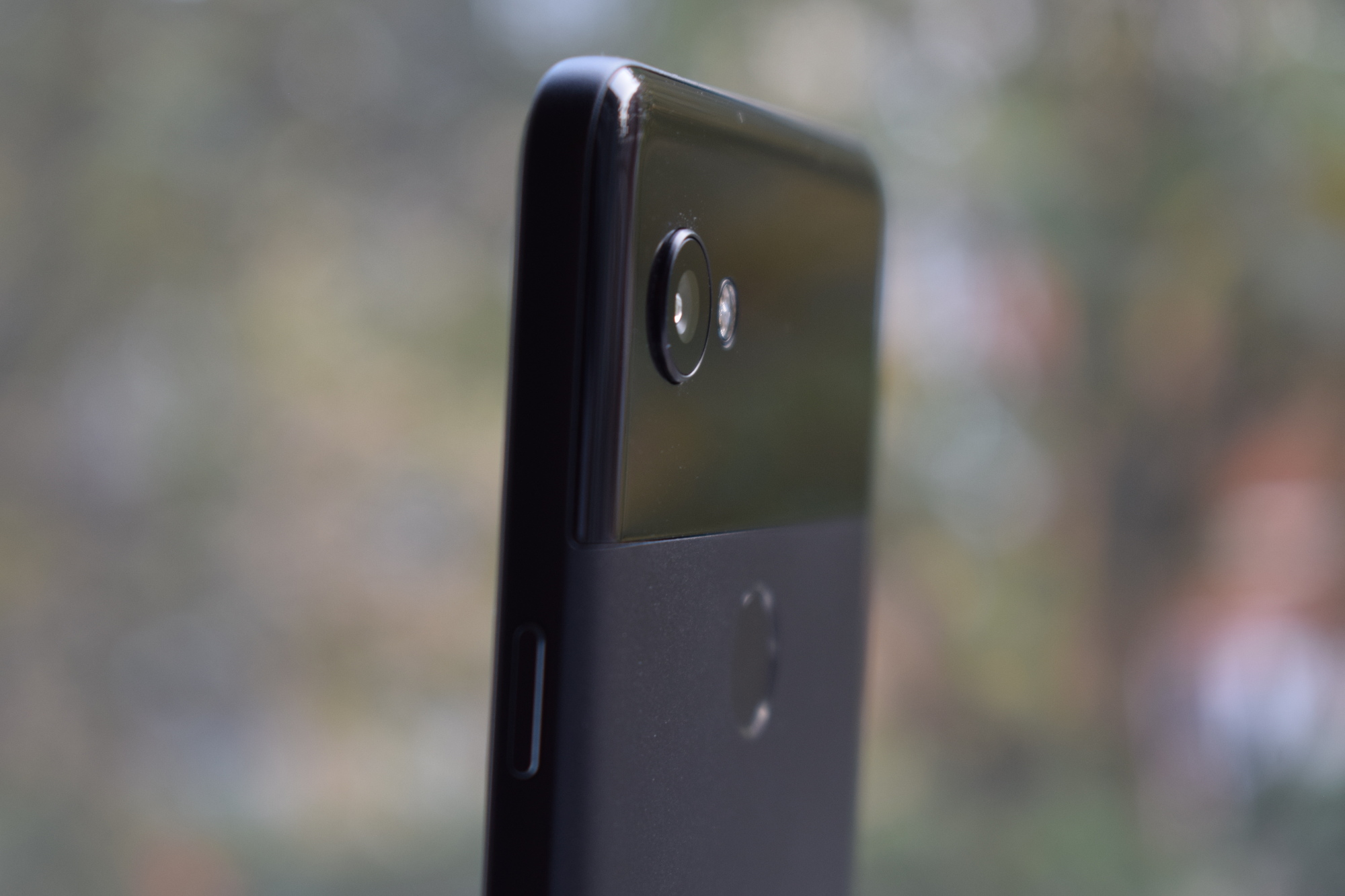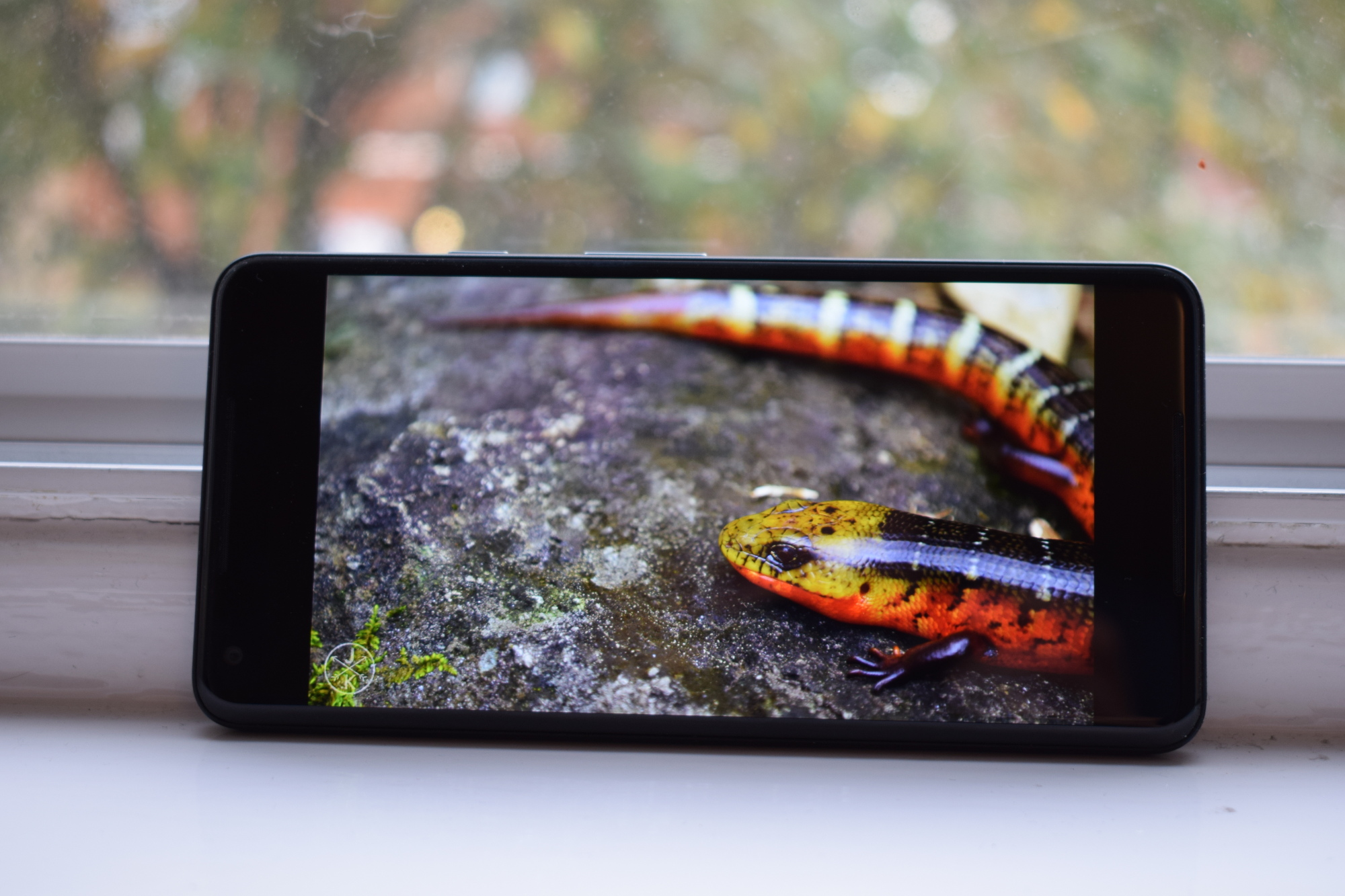Google Pixel 2 XL review
The search giant takes aim at Samsung and Apple's finest smartphones
The Pixel 2 XL is the best pure Android phone in the market with a smarter Google Assistant and a large curved screen. Unfortunately, the display is a nasty disappointment, with poor viewing angles and dull colours which keeps Google's phone from achieving greatness.
-
+
Fresh, attractive yet practical design; The best take on Android Oreo around; Powerful hardware
-
-
Atrocious screen viewing angles; Poor colours on the display; Bad 4K video compression

Camera
Speaking of smartphone cameras, the Pixel XL had one of the best mobile cameras around, and thankfully the Pixel 2 XL continues that legacy.
Photos snapped through the 12MP, f/1.8 aperture lens are detailed and have nicely balanced colours. There is a small but noticeable improvement in contrast and detail over the camera of the original Pixels, too.
Google's "Really Blue" Pixel is heading to the UK Samsung Galaxy Note 8 review Google Pixel 2 hands-on review: Back and better than ever
However, video at 4K/30fps is a weaker point, with captured footage appearing to have less detail when compared side-by-side with a video caught on Pixel XL. This issue is likely down to poor video compression though, which is something that Google should be able to patch out.
Optical image stabilisation is now available in the Pixel 2 XL, helping achieve better macro and low light photography, but things get smart when the optical image stabilisation is combined with the handset's electronic image stabilisation. Machine learning stitches the two techniques together and smooths out any bumps and jerks when recording video; if you need to shoot a video one handed or after a lot of coffee, the smart stabilisation really works well to iron out any jittery movement.
And the machine learning doesn't stop there. When taking stills, the Pixel 2 XL captures multiple pictures from a single shot and uses smart algorithms to form the best possible picture out of the images. It also records a three second clip to create a form of 'live photo' with smartly selected beginning and end points for the clips.

The Pixel 2 XL's camera also has a novel approach to snapping photos with impressive depth of field, thanks to the use of a lens that has pixels made up of two smaller pixels, forming a dual pixel camera that uses machine learning to measure the depth of pictures, without needing a second lens like the OnePlus 5 or iPhone 8 Plus.
This is the tech behind the Pixel 2 XL's portrait mode, which helps keep the subject of a photo in focus while artistically blurring the background. Working on the 8MP front-facing camera as well, the Portrait mode produces some very nice pictures that achieve some of the fancy bokeh effects that would normally be the domain of DSLR cameras.
Without a doubt, the Pixel 2 XL has one of the best cameras out of any smartphone, and if Google can improve the video compression then that camera will go from excellent to sublime.
Verdict
While it's getting difficult to actually buy a bad smartphone these days, there has been a clutch of impressive handsets that made their debut this year; were it not for them the Pixel 2 XL would be the best Android handset around.
Despite our disappointment with the display, the size of it combined with the performance of the hardware and the Google's smart software means the Pixel 2 XL is great for work and play.
On the other hand, if you value your privacy then the Pixel 2 XL is not for you, as it's smart features are at their best with free access to your apps and data.
The sticking point is really the price. When the Pixel 2 XL hits stores, Google will want 799 for the 64GB version and 899 for the 128GB model, which is a rather high price for a utilitarian smartphone.
The mighty Galaxy Note 8 is in that price range and offers a more striking design and mesmerising display, and the Galaxy S8+ is now available for a little more than 600 and offers excellent performance as well as a great 6.7-inch display and a refined software experience.
Fans of pure Android who want a well-made, big-screen workhorse of a smartphone will want the Pixel 2 XL, which is worth the extra cost over the smaller and less impressively-designed Pixel 2.

However, for those who are less fussed about smart virtual assistants and near-stock Android, Samsung's Galaxy handsets are likely to be the better fit thanks to their superior design and displays. And Apple fans are not likely to be swayed when the iPhone X is on the horizon and is only (comparatively speaking) a little more expensive.
Nevertheless, the Pixel 2 XL is Google's attempt to showcase its machine learning chops and present the best take on Android around, and it succeeds with aplomb. If Google can keep improving upon its Pixel phones each year, then we could soon be seeing a new smartphone champion to knock Apple and Samsung off their pedestals.
Verdict
The Pixel 2 XL is the best pure Android phone in the market with a smarter Google Assistant and a large curved screen. Unfortunately, the display is a nasty disappointment, with poor viewing angles and dull colours which keeps Google's phone from achieving greatness.
| Processor | Octa-core 2.35GHz Qualcomm Snapdragon 835 |
| RAM | 4GB |
| Screen size | 6in |
| Screen resolution | 2,880 x 1,440 |
| Screen type | P-OLED |
| Front camera | 8-megapixel |
| Rear camera | 12.2-megapixel |
| Flash | dual-LED |
| GPS | Yes |
| Compass | Yes |
| Storage (free) | 64/128GB |
| Memory card slot (supplied) | N/A |
| Wi-Fi | 802.11 a/b/g/n/ac |
| Bluetooth | 5.0 |
| NFC | Yes |
| Wireless data | 4G |
| Dimensions | 157.9 x 76.7 x 7.9 mm |
Get the ITPro daily newsletter
Sign up today and you will receive a free copy of our Future Focus 2025 report - the leading guidance on AI, cybersecurity and other IT challenges as per 700+ senior executives
Roland is a passionate newshound whose journalism training initially involved a broadcast specialism, but he’s since found his home in breaking news stories online and in print.
He held a freelance news editor position at ITPro for a number of years after his lengthy stint writing news, analysis, features, and columns for The Inquirer, V3, and Computing. He was also the news editor at Silicon UK before joining Tom’s Guide in April 2020 where he started as the UK Editor and now assumes the role of Managing Editor of News.
Roland’s career has seen him develop expertise in both consumer and business technology, and during his freelance days, he dabbled in the world of automotive and gaming journalism, too.
-
 Cleo attack victim list grows as Hertz confirms customer data stolen – and security experts say it won't be the last
Cleo attack victim list grows as Hertz confirms customer data stolen – and security experts say it won't be the lastNews Hertz has confirmed it suffered a data breach as a result of the Cleo zero-day vulnerability in late 2024, with the car rental giant warning that customer data was stolen.
By Ross Kelly Published
-
 Women show more team spirit when it comes to cybersecurity, yet they're still missing out on opportunities
Women show more team spirit when it comes to cybersecurity, yet they're still missing out on opportunitiesNews While they're more likely to believe that responsibility should be shared, women are less likely to get the necessary training
By Emma Woollacott Published
-
 OpenAI wants developers using its new GPT-4.1 models – but how do they compare to Claude and Gemini on coding tasks?
OpenAI wants developers using its new GPT-4.1 models – but how do they compare to Claude and Gemini on coding tasks?News OpenAI says its GPT-4.1 model family offers sizable improvements for coding, but tests show competitors still outperform it in key areas.
By Ross Kelly Published